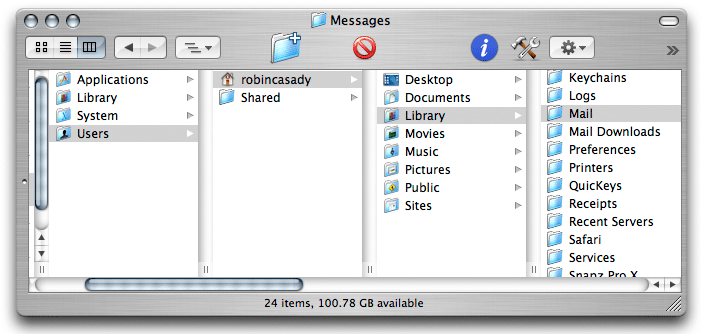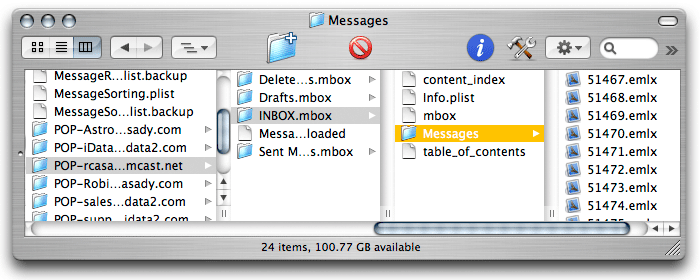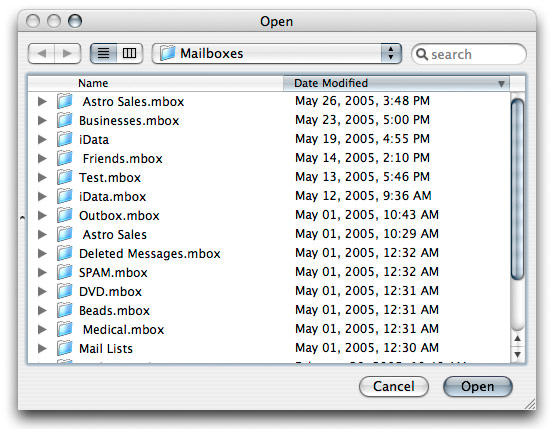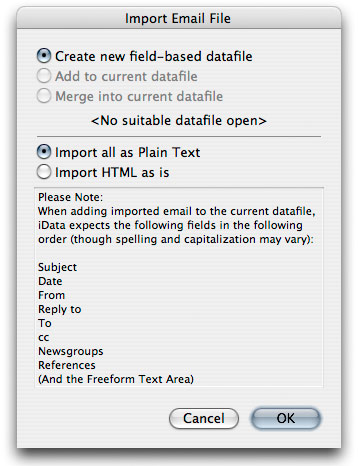These files would have originally been located within a series of folders in the user's Library folder (not the general Library folder). There isn't room to show the full path to these files in one window, so here it is in two windows:


If you didn't create folders and Rules for directing all your email messages into folders, your messages may be in the Inbox. The Inbox is in a slightly different place. In the same folder as the Mailboxes (folder listed above), you will find a folder that begins POP- and includes your email address. In that folder will be an INBOX.mbox folder. This is where your Inbox messages are located.

When you
select Import: Apple Mail - OS 10.4 or Later... in the
File menu, you
will have to navigate to the Library and find the folder that you want to import.

If you created mailbox folders in the Mail application for different kinds of email, those folders will appear here with .mbox after the name. You can import all the emails in an .mbox folder by selecting it in the Open dialog. If you created one or more mailboxes within another mailbox, you can navigate those mailboxes and open them.
Once you have selected the desired .mbox folder, click the Open button. A dialog will appear giving you several options.

If you have a datafile open with the appropriate fields, you can add or merge the imported records into the existing datafile.
Add to current datafile
This will append the imported records to the current datafile. No attempt will be made to determine if a message already exists in the datafile. To avoid duplicate records, you must be sure that messages you previously imported are not in the folder that you are now importing.
Merge into current datafile
This will sort the current datafile and only import messages that are not already in the datafile. If there is the slightest difference, iData Pro will see it as a new message.
Email Record Structure
iData Pro places the message portion of each imported email message into the Freeform Text Area of a record. In addition, any existing data of the following types will be put into matching fields:
Subject
Date
From
Reply
to
To
cc
File
Name
References
Import Speed
Old HTML messages that contain links to images that no longer exist on the Web are a particular problem, as the system may spend as much as a minute (which feels like forever) trying to find the image before giving up. In a few cases, the system will not be able to process such a message, and will return an error code. In these cases, iData will place a message saying, "HTML could not be processed." in the Message area.
If you notice that you have a record containing an unprocessed message, you can look at the File Name field to find the name of the .emlx file. Find that file in the Finder and double-click it to open it in Mail. Then, you can copy the message content in Mail and paste it into the iData record.
If it seems that the import is going on for longer than normal, you can abort the import process at any time by typing the esc key or command-period. However, if you know that the mailbox being imported is large, it's probably best to be patient. When the process is aborted, messages that have already been imported will show up in the datafile.